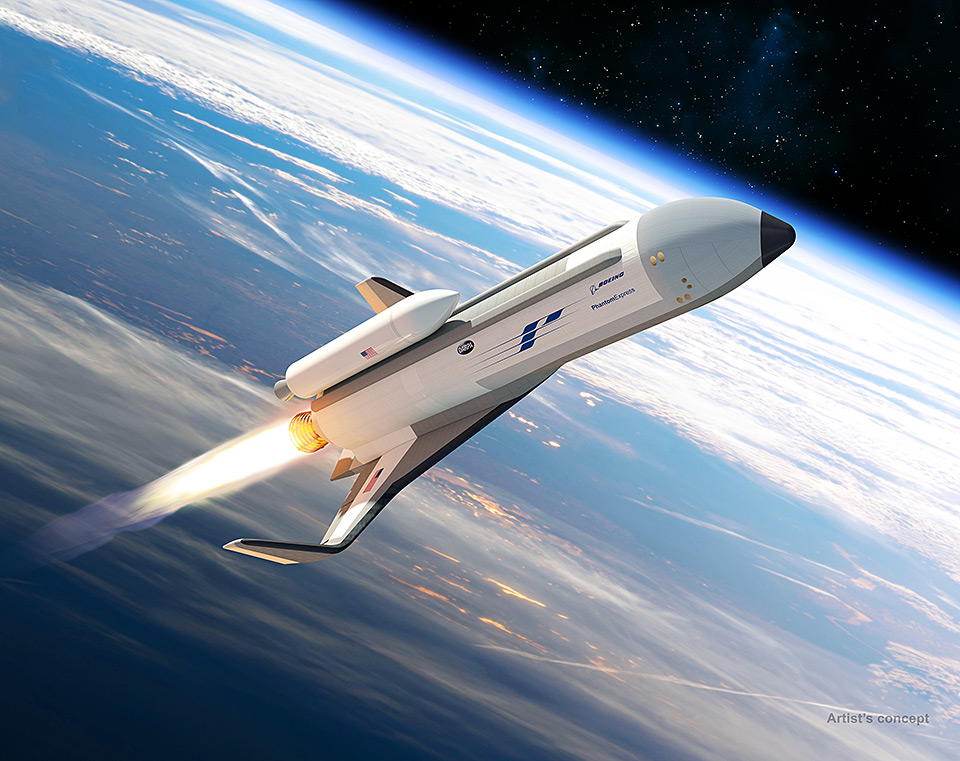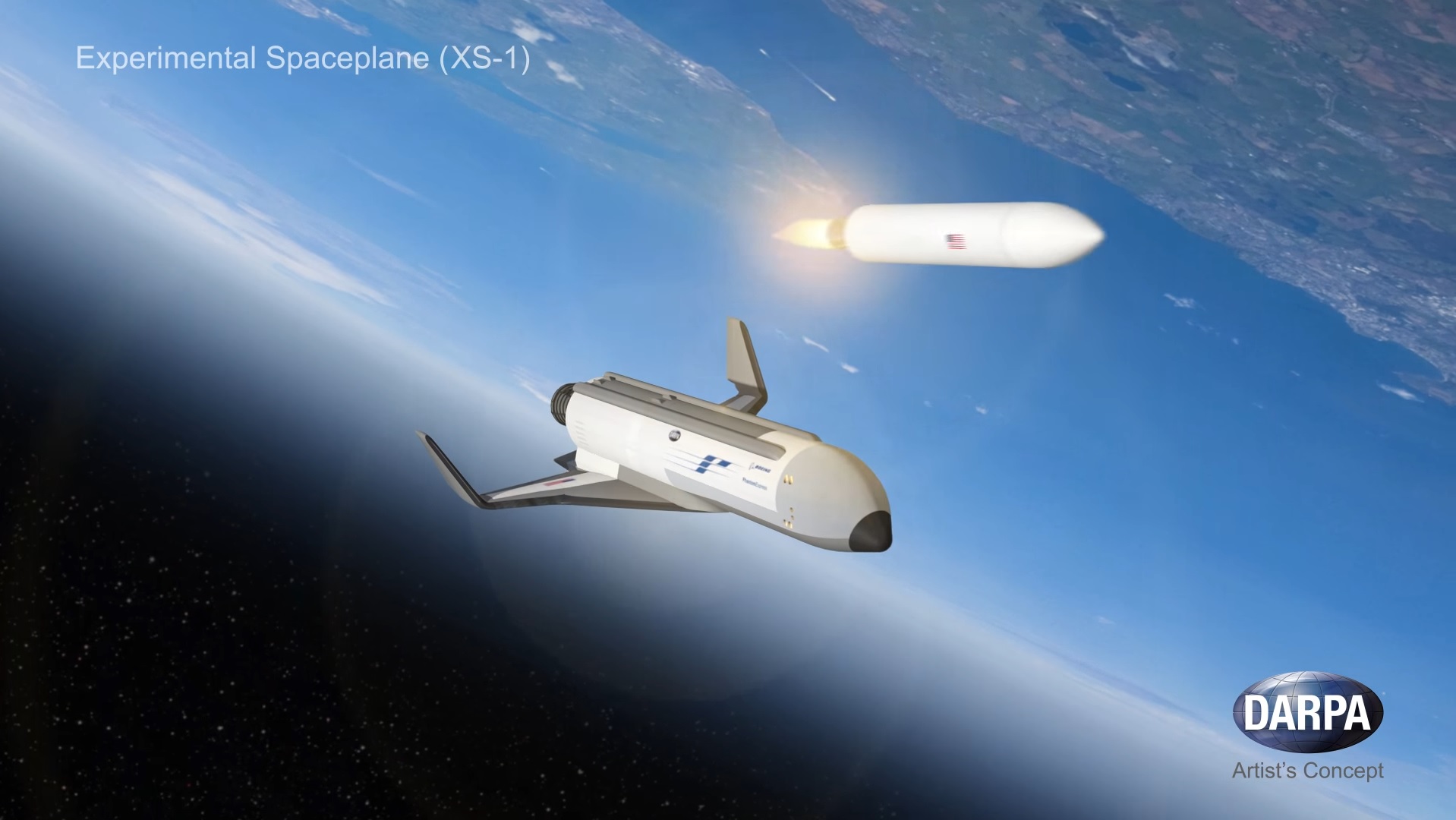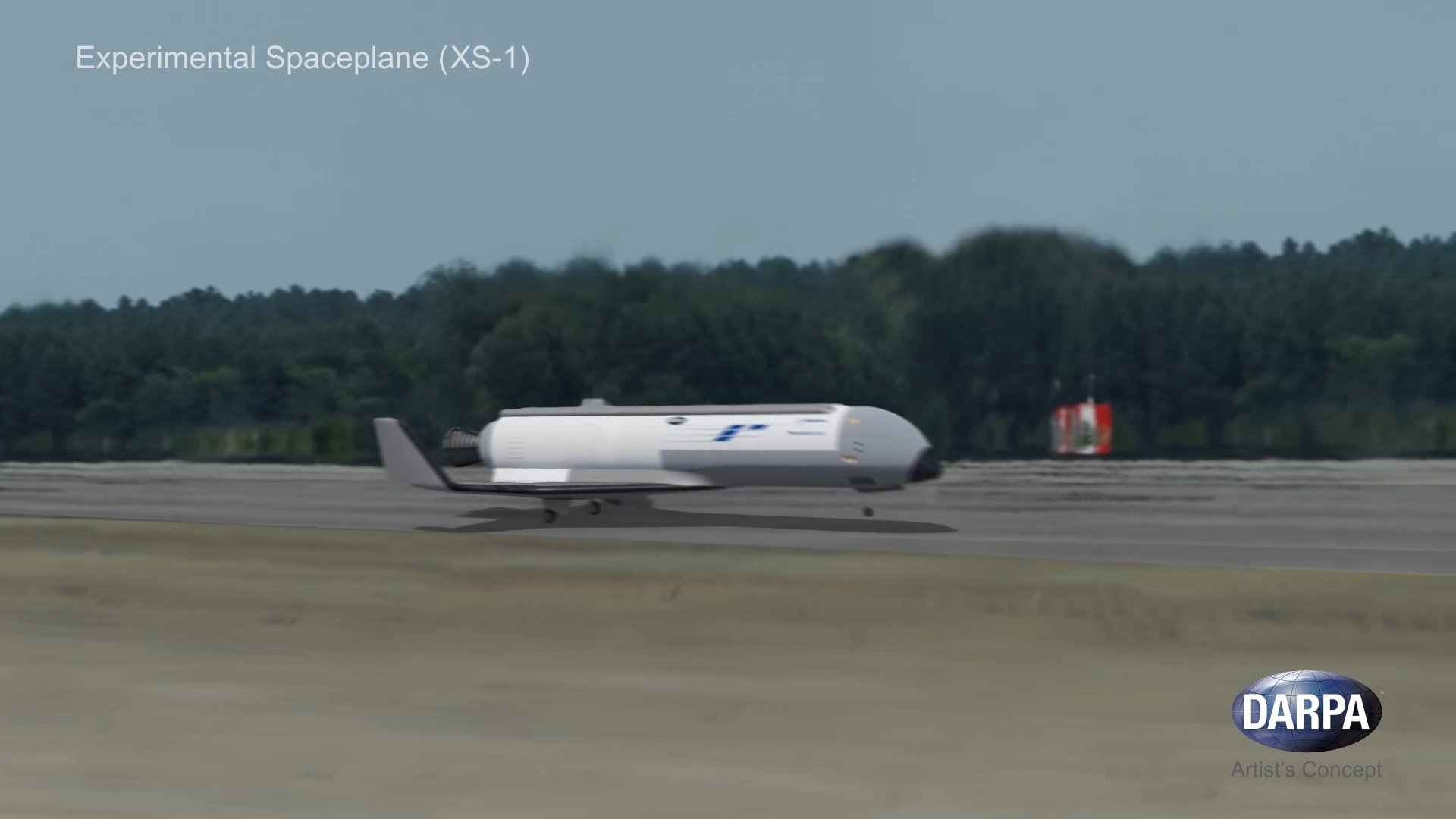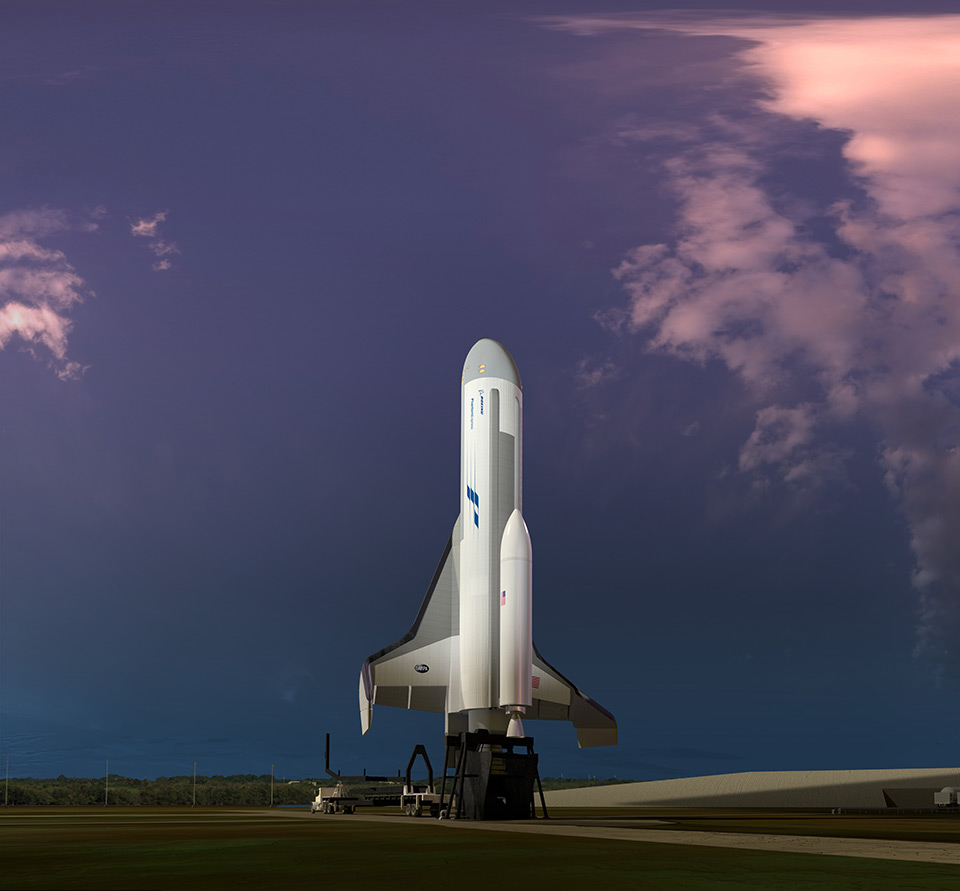
Now in Phase 2!
DARPA picked Boeing’s Phantom Works division to complete advanced design work for the agency’s Experimental Spaceplane (XS-1) program that aims to build and fly an autonomous, reusable hypersonic space plane capable of dispatching medium-class satellites into Low Earth Orbit. The overall goal of the program is to create an aircraft-like access to space, procuring a launch vehicle for a satellite in a period of days – a process that currently takes months and years of preparation.

Specifications:
The Phantom Express vehicle comprises two major components – the rocket-powered space plane that takes off powered by a single liquid-fueled engine and delivers an expendable upper stage to the edge of space with sufficient velocity for the upper stage to reach orbit after firing its engine. The 30.5-meter long space plane will be powered by a single AR-22 reusable cryogenic rocket engine built by Aerojet Rocketdyne based on the legacy Space Shuttle Main Engine.
Boeing says the Phantom Express launch system would be capable of placing a satellite of 1,361 Kilograms (3,000lbs) into Low Earth Orbit.
The size of a small business jet, Phantom Express has a wing span of 19 meters and would take off vertically like a conventional rocket, accelerate to hypersonic speed, dispatch the upper stage and re-enter the atmosphere for an autonomous landing on a runway.
Launch price/cost:
XS-1 is aiming for a recurring cost of as little as $5 million per flight including the cost of the expendable upper stage, provided a flight rate of at least ten missions per year. Launch prices for commercial missions would be determined by market forces, DARPA says. In terms of performance, XS-1 is comparable with the Minotaur IV rocket that comes at a cost in excess of $50 million.


Source:
Spaceflight101.com
